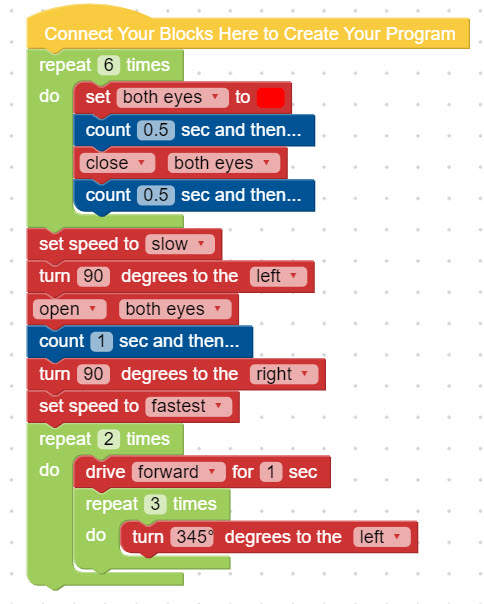Creature Creation
Students will create a program for the GoPiGo to behave like a newly discovered creature. They will then write a informational piece describing characteristics of the new creature.
Setup
- Copy student handouts
Introduction
- Designers, sculptors, and engineers work together to create creatures for movies and television. They use the physical appearance of the creatures as well as the movements to develop the character. Project one or both of the videos below to show examples of how puppets made for movies and television.
- Facilitate a class discussion about the one-eyed, one-horned purple people eater. What type of creature might it be and why? What are some of the creature's character traits? What movements or behaviors support your opinion?
- Tell the class that they are going to focus on the movement aspect of the creature. They will program a GoPiGo robot to move around and then develop a creature based on the movements of the robot.
Procedure
- Students will follow the directions on the student handout to create a creature to include physical attributes and character traits.
- Students will then create a program to bring their creature "to life". Depending on the number of GoPiGo robots available, students can create the program by connecting to a robot OR they can create a program without a robot on www.bloxter.com. If students create a program without being connected to a robot, they will need to download the program onto a USB flash drive to transfer it to a GoPiGo. ** A sample program is shown below. If needed, facilitate a class discussion around the program and the creature it might be for. Is this a kind creature or malevolent one? Why? Is this an adventurous or timid creature? Why? **
- Once students have developed their character, discuss the writing prompt. Students will write a short 2-3 paragraph snapshot that captures the essence of their creature. This snapshot is a scene that creates a vivid picture in the reader's mind. This process is outlined in the student handouts. It includes incorporating sensory details (sight, sound, taste, touch, and smell), dialogue (if possible for the creature), and the use of strong verbs.
- Students will draft, revise, and edit their scenes. Students may need to run their program on the GoPiGo robot during the writing process to help them develop the scene.

Closure
- Allow time for students to share their creature and snapshot with the class.
- Facilitate a class discussion about the successes and challenges of the project.
Extension
- Students can create costumes and scenery for the GoPiGo robot to further bring their creature to life.
- Students can utilize sensors and servos to add on to their creature.
Last modified: Friday, 20 November 2020, 4:15 PM